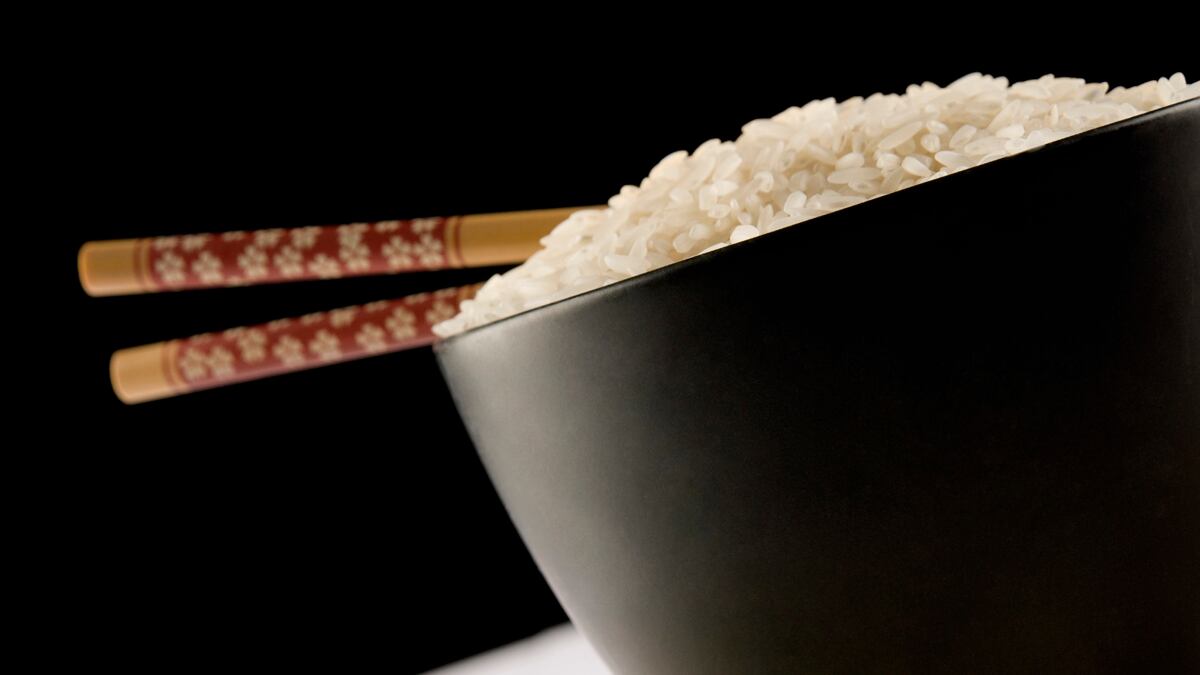Et tu, Rice Krispies?
It would appear so. This week, the influential Consumer Reports dropped a bombshell: rice, a key ingredient in everything from baby food to breakfast cereal, contains detectable amounts of arsenic, an established carcinogen—as well as a convenient poison in countless mysteries. Furthermore, people who recently had eaten a rice-based meal had higher levels of arsenic in their bloodstream than those who had not. Consumer Reports’s intentionally alarming study followed its investigation earlier this year that found worrying amounts of arsenic in apple and grape juices.
How did something as wholesome and all-natural as rice find itself in such shady company, right there with preservatives and fast food? Because it is natural. Food grown in soil absorbs whatever potential toxins are present. In this case, it’s an element, atomic number 33—Breaking Bad fans please note—next to selenium and below phosphorus, and designated As on the Periodic Table.
Rice appears to be a concentrator of arsenic for two distinct reasons. First, something about rice just seems to attract arsenic into the grain, particularly into the husk that gives brown rice its brown color. Ironically, brown rice, always considered healthier, has a decidedly higher level of arsenic than the white, or unhusked, version. Second, rice grows differently from other grains. A field of wheat swaying across the American Plains is a favorite of Sunday painters, but unlike wheat, rice likes it wet. It thrives in marshes, referred to more familiarly as rice paddies, and the water has plenty of arsenic.
The source of all this arsenic is the subject of disagreement. The U.S. Rice Federation, the $34 billion industry’s house organ, insists that arsenic in the soil is as natural as sodium chloride in the ocean and oxygen in the sweet air we breathe. Indeed, arsenic is natural, and soil here, there, and everywhere has detectable levels, most of it in the form of organic arsenic, a much less carcinogenic version. But mankind has added to the natural arsenic a large amount of the more carcinogenic inorganic form in old-school insecticides, especially those used years ago, before they were banned, to spray cotton crops. It turns out that most of the rice we eat, 85 percent, is grown in the United States, especially in Arkansas, which supplies about half; Texas; Louisiana; and Mississippi. (California is the other big supplier.) Although the evidence is circumstantial, these former cotton-growing Southern states turn out rice with higher levels of inorganic arsenic than rice grown elsewhere.
And until recently, arsenic was present as Roxarsone™ in a popular chicken-feed supplement. Pfizer only last year removed the product voluntarily after arsenic was found in chicken livers. In truth, this form is organic and therefore decidedly less carcinogenic, but the concern about arsenic poisoning, even in this chemical state, was sufficiently serious that the product is no longer available.
Although rightfully getting a bum rap right now, arsenic has a long and salubrious history in medicine, it should be noted. The first antibiotic was an arsenical, Salvarsan 606, developed 100-plus years ago to treat syphilis. And arsenic has a long-standing role in cancer chemotherapy. Fowler’s solution, concocted in the 19th century, was used in the pre-chemo era with some success to treat leukemia and recently has found its way back into the clinic to manage a specific, unusual type of leukemia, acute promyelocytic, as arsenic trioxide or Trisenox™. Finally, arsenic was a favored ingredient of facial crèmes for centuries, providing a clear and very pale Morticia Addams look.
So, what’s a person to do? Rice is an essential food for countless groups, said to provide one fifth of the calories consumed worldwide by humans. It can’t simply be cashiered until further studies determine its safety. Consumer Reports provides a few tips on “how to reduce your arsenic risk,” including increasing consumption of other grains such as wheat or quinoa and washing rice thoroughly. The latter flies in the face of longstanding admonishments not to rinse, lest the nutrients be washed away. And there is the rub—in our attempt to make our food ever safer, we may be throwing out the nutrients with the bath water.






